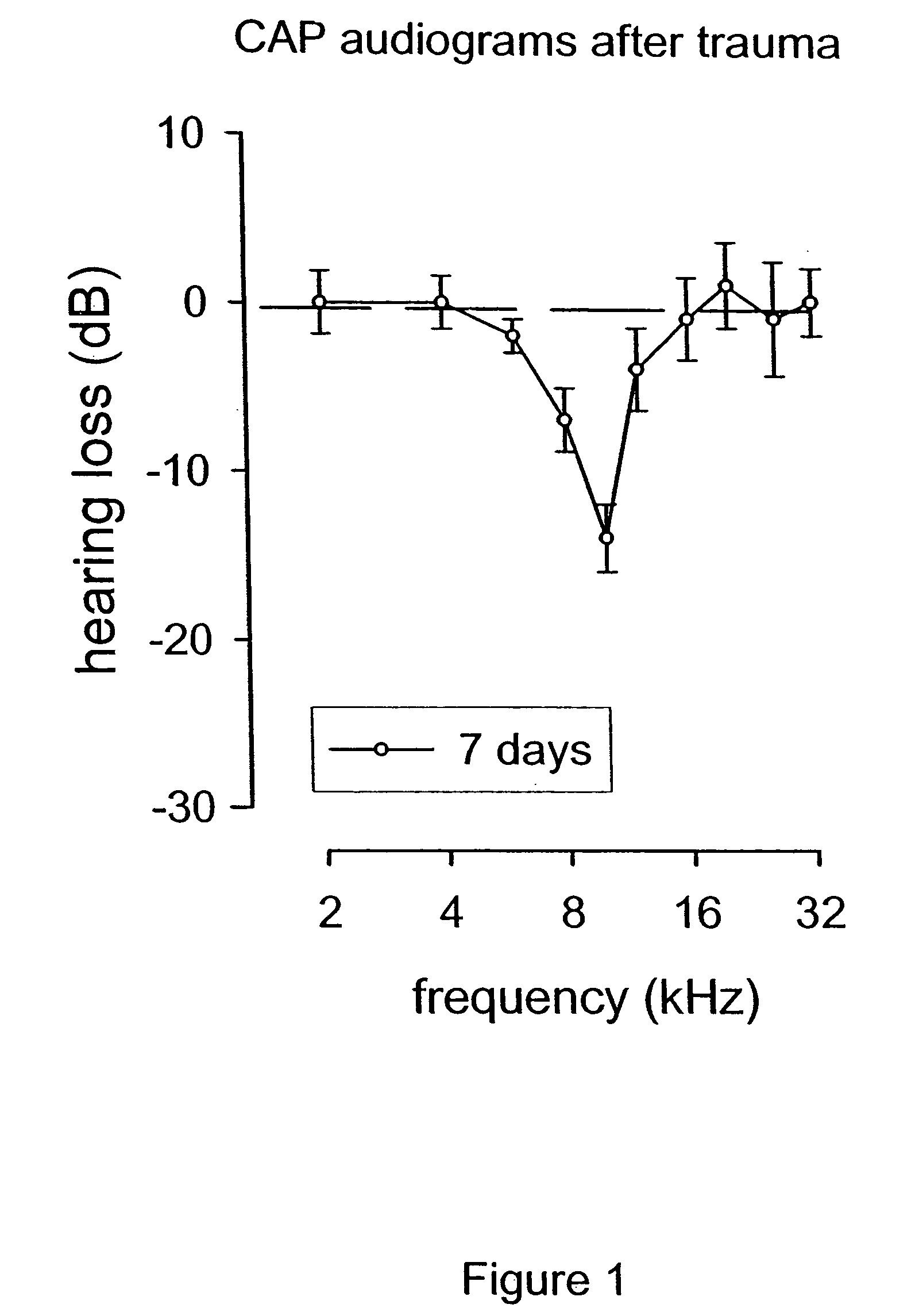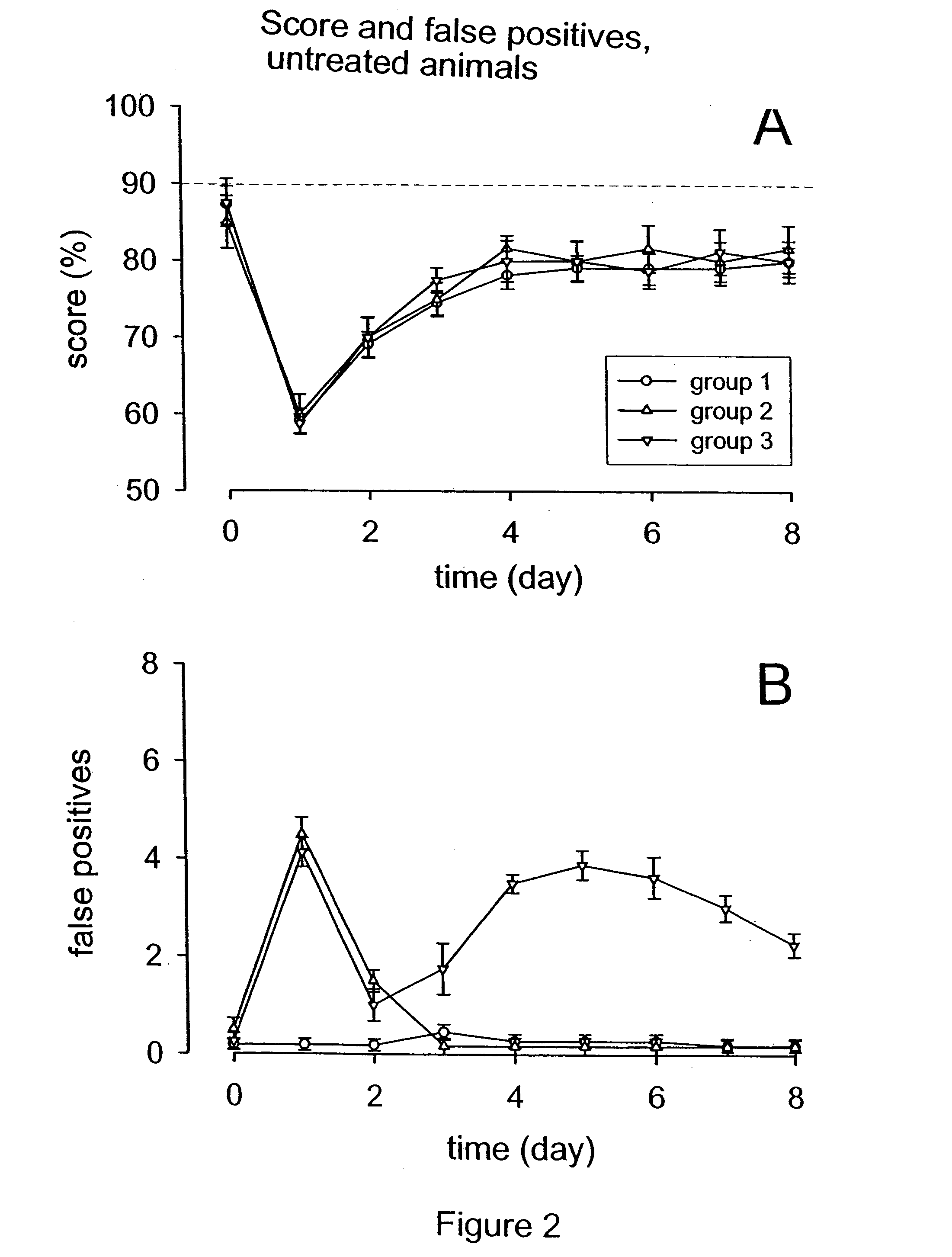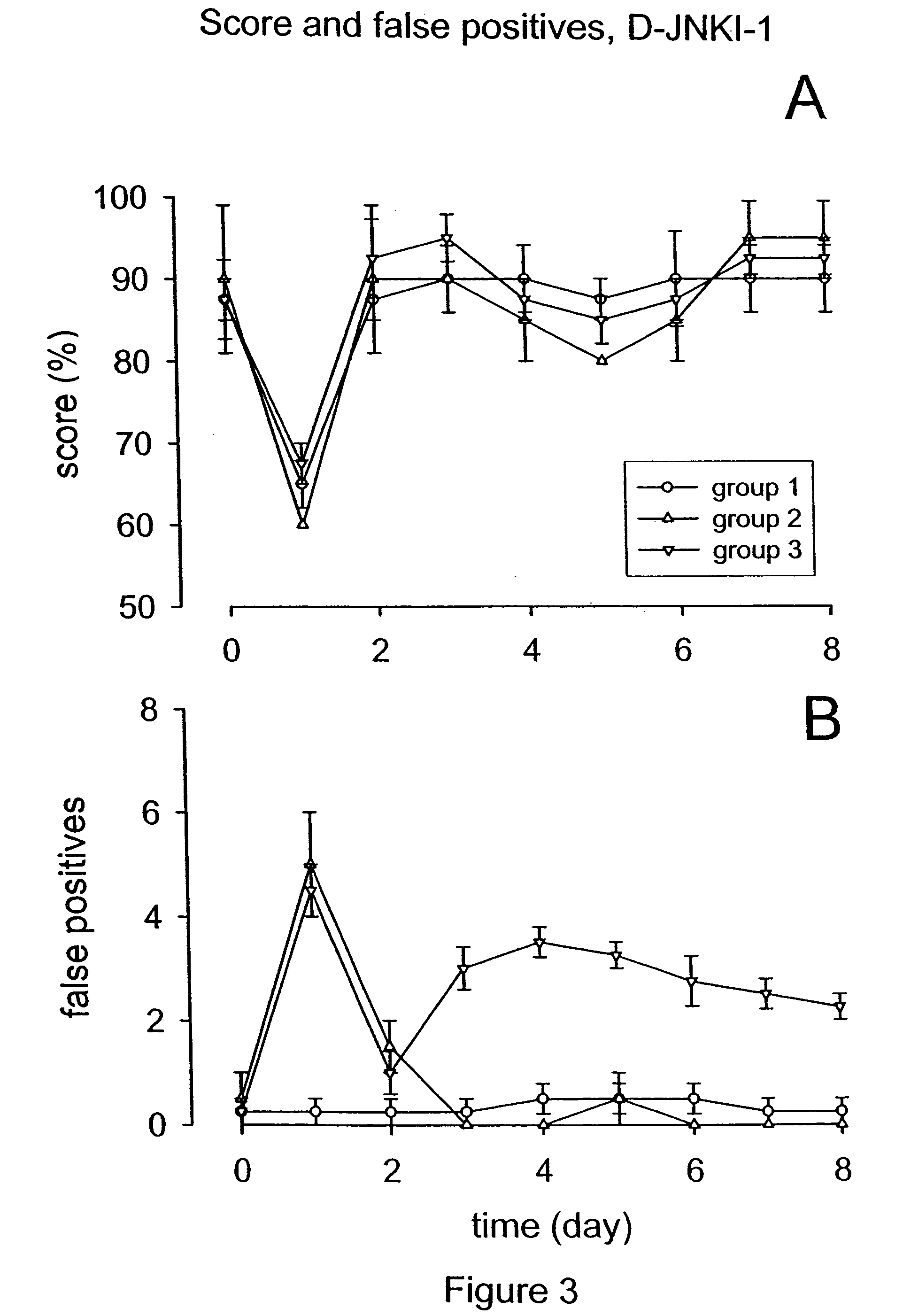Methods for the treatment of tinnitus induced by cochlear excitotoxicity
a cochlear excitotoxicity and tinnitus technology, applied in the direction of biocide, heterocyclic compound active ingredients, drug compositions, etc., can solve the problems of inability to truly effective treat the disease, damage to the target neuron, and may eventually die, so as to prevent and/or treat tinnitus, suppress or reduce the aberrant activity of the nmda receptor of the auditory nerve, and prevent the effect of tinnitus
- Summary
- Abstract
- Description
- Claims
- Application Information
AI Technical Summary
Benefits of technology
Problems solved by technology
Method used
Image
Examples
example 1
Methods and Materials
[0049] We developed and tested an animal model of tinnitus induced by cochlear excitotoxicity, which was provoked by acoustic trauma. As tinnitus in general is not directly observable, as cochlear excitotoxicity does not result in tinnitus in all individuals, and as perceptions of tinnitus may just disappear a few hours after the excitotoxic incident or last forever, the definition and implementation of such an animal model represented a substantial challenge. These considerations mean for example that more animals are required to obtain a sufficient number of tinnitus cases for study and to permit observation of tinnitus over time. As it is unclear whether a case of tinnitus induced by cochlear excitotoxicity is to last or not, it is advisable to conduct studies in its early stages.
[0050] The experiments were performed in two stages. First, the hearing loss following acute acoustic trauma as well as the incidence of tinnitus were evaluated with no therapeuti...
example 2
Methods and Materials
[0066] To evaluate the different mechanisms of salicylate and excitotoxicity induced tinnitus, comparative morphological analysis of the cochlear sensorineural structures as well as Western blot immunodetection following the two different types of tinnitus inducing incidents were performed.
Morphology
[0067] Two groups of 3 Long Evans rats each were either treated twice a day with an intraperitoneal injection of 350 mg / kg of sodium salicylate for 2 days or traumatized as described in [0036]. After decapitation of the rats under deep anaesthesia (pentobarbital 50 mg / kg), the cochleas were removed from the temporal bone and perfused with a fixative solution of 2.5% glutaraldehyde in 0.1 M phosphate-buffered saline (PBS), pH 7.3. They were then processed either for scanning (SEM) or transmission electron (TEM) microscopy. For SEM, the otic capsule was dissected out and the stria vascularis, tectorial, and Reissner's membranes were removed. After rinsing in PBS (...
example 3
Methods and Materials
[0074] In order to confirm and extend the results obtained in the previous experiments, we developed and tested another animal model of tinnitus induced by cochlear excitotoxicity, which allowed direct measurement of the presence of tinnitus, i.e. without using a behavioural model. Martin et al., Proceedings of the Fifth International Tinnitus Seminar, American Tinnitus Association: 127-134 (1996) described a narrow spectral peak at approximately 200 Hz in the spectrum of the ensemble spontaneous activity (“ESA”) of the cochlear nerve in persons suffering from tinnitus. These results were consistent with findings in various animal models of from tinnitus. These results were consistent with findings in various animal models of tinnitus, suggesting that this peak was indeed an objective correlate of tinnitus. There has been, however, no specific objective evaluation of tinnitus induced by cochlear excitotoxicity, neither in human beings, nor in animals.
[0075] W...
PUM
| Property | Measurement | Unit |
|---|---|---|
| sound pressure level | aaaaa | aaaaa |
| frequency | aaaaa | aaaaa |
| pH | aaaaa | aaaaa |
Abstract
Description
Claims
Application Information
 Login to View More
Login to View More - R&D
- Intellectual Property
- Life Sciences
- Materials
- Tech Scout
- Unparalleled Data Quality
- Higher Quality Content
- 60% Fewer Hallucinations
Browse by: Latest US Patents, China's latest patents, Technical Efficacy Thesaurus, Application Domain, Technology Topic, Popular Technical Reports.
© 2025 PatSnap. All rights reserved.Legal|Privacy policy|Modern Slavery Act Transparency Statement|Sitemap|About US| Contact US: help@patsnap.com



